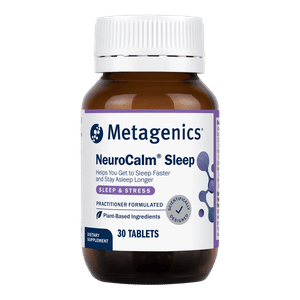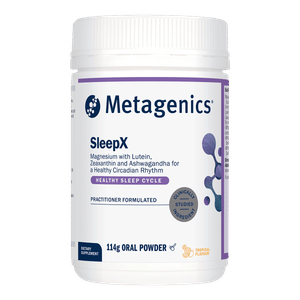
Fast Facts
- Strategies that address the psychological drivers of chronic pain have been shown to improve back pain in 63.6% of patients (p<0.01) (1). In a randomised-controlled trial, 12 patients received psychophysiologic symptom relief therapy (PSRT) over four weeks followed by eight weeks of mindfulness-based stress reduction therapy. PSRT educated patients on psychological responses to ongoing pain, stress reduction and healthy emotional expression, as well as providing visualisation exercises that enhanced pain desensitisation and helped regain normal physical activity. Interestingly, a 12-week follow-up after the study revealed that 45.5% of patients were considered completely functionally recovered (p<0.03)*, highlighting the value of PSRT and mindfulness for management of chronic back pain.
- The connective tissue-enhancing properties of collagen have been found to reduce knee pain experienced after physical activity (running, team sports, hiking and general fitness) (2). In a randomised, double-blind, placebo-controlled trial, 108 healthy participants aged between 18 to 30 years received 5 g/d of type I collagen for 12 weeks. Outcomes indicated a mean 21% improvement in subjective and professionally assessed knee pain compared to baseline scores (p<0.01) and placebo (p<0.02), highlighting the benefits of collagen for knee pain.
- Progressive muscle relaxation (PMR) exercises during the post-operative period have been shown to improve pain, emotional tension and poor sleep following herniated disc surgery (3). In a randomised, non-blinded, parallel trial, patients who underwent lumbar microdiscectomy received either routine nursing alone (n=50) or in combination with PMR exercises designed to actively contract and passively relax major muscle groups (n=47). PMR was performed twice daily in the late afternoon and the evening (for a total time of 1 hour 10 minutes) on days one, two and three following surgery. Patients reported improvements in pain, anxiety and sleep scores on the second and third post-operative day (p<0.001), demonstrating the benefits of PMR exercises for enhanced patient recovery following spinal surgery.
*Based on patients achieving 0/24 scoring on the Roland-Morris Low Back Pain and Disability Questionnaire.
Focus On
Chronic pain is estimated to affect 17% to 25% of people (4). Within this population, disturbed sleep affects 24% to 32% of individuals, occurring twice as frequently when compared to the general population (4).
In patients who suffer persistent pain, poor sleep limits next-day physical function (4), worsens pain sensitivity and can trigger spontaneous symptoms such as headaches (5). Further, sleep disturbances hinder effective pain management (4,5) while also worsening the severity of other comorbid conditions such as diabetes (6), cardiovascular disease (7) and mood disorders (8). As such, providing patients with sleep-supporting strategies can enhance pain management and improve quality of life.
Painfully awake: Understanding the relationship between pain and insomnia
Insomnia is defined as reduced sleep quantity or quality, along with difficulty initiating or maintaining sleep (4). In chronic pain, delayed sleep onset due to discomfort, frequent night-time waking and shorter sleep time can exacerbate symptoms of pain (9). This in turn can worsen insomnia, aggravating a cycle of pain and poor sleep that escalates in severity over time (4,5).
Physiologically, sleep deficiency increases pain sensitivity by limiting the activity of several pathways within the central nervous system (CNS) that moderate pain signalling (e.g. opioid and melatonin systems), while also increasing inflammatory mediator activity (e.g. prostaglandins and cytokines) that promotes hyperalgesia (5). Therefore, improving sleep quality can favourably influence pain signalling, pain sensitivity and inflammatory load, breaking the cycle of pain and insomnia.
Enhancing pain management with sleep support
Many patients utilise manual therapies to manage chronic pain and improve physical function and quality of life. To further aid clinical pain management, specific combinations of natural ingredients can provide additional relief while also attenuating secondary symptoms of pain including disturbed sleep.
Replacing GABA and glutamate to offset pain-induced insomnia
Ingredients that boost gamma-amino butyric acid (GABA) activity can help to dampen pain signalling and enhance sleep quality. GABA functions as an inhibitory neurotransmitter within the CNS, counteracting the excitatory neuronal signalling of glutamate (which promotes pain). Imbalances with the GABA/glutamate ratio (characterised by lower GABA levels) have been associated with increased pain sensitivity (10) and more frequent sleep arousal (11, 12).
Herbs such as California poppy, zizyphus, passionflower and lavender oil have been shown to increase GABA activity. For example, California poppy stimulates GABAA receptors to enhance GABA neurotransmission (13), while zizyphus activates the GABA-synthesising enzyme, glutamic acid decarboxylase, promoting GABA production (14). Passionflower may increase synaptic GABA concentrations (15) and has been shown to effectively enhance sleep quality at a dose of 2 g/d (p<0.01) (16). Additionally, 80 mg/d of lavender oil administered for 12 weeks has been demonstrated to improve sleep scores (17), supporting the utility of California Poppy and Passionflower for Sleep.
Restoring circadian rhythm
Sleep is influenced by the body’s circadian rhythm (the ‘internal clock’ that dictates the sleep-wake cycle). Circadian rhythm disruptions are common among patients who experience chronic pain, leading to disrupted sleep patterns and poor sleep quality (18). Lifestyle factors such as artificial nocturnal light (particularly blue light from televisions, computers, tablets and smart phones) (19), shift work (20), excessive stimulant consumption (20) and chronic stress (21) further exacerbate circadian rhythm dysfunction.
Considering this, ingredients that improve circadian function are uniquely positioned to improve patient sleep quality. Specifically, 500 mg/d of magnesium (22) and 400 mg/d of L-ornithine (23) prescribed for eight weeks have been shown to enhance sleep onset and maintenance. Additionally, 250 mg/d to 600 mg/d of withania taken for eight weeks was found to improve sleep quality (p<0.05) (24), while 20 mg/d of lutein and 4 mg/d of zeaxanthin administered for six months reduced sleep disturbances (p<0.05) (25). As such, Magnesium with Lutein and Zeaxanthin for Sleep Pattern Support may reduce sleep latency and increase sleep duration among patients experiencing circadian rhythm disruptions. Further, the Metagenics Sleep Assessment Questionnaire (SAQ) can help Practitioners identify lifestyle factors that may impact patient sleep quality.
Improve sleep quality and banish pain
Sleep dysregulation and chronic pain have a bidirectional relationship, with diminished sleep increasing pain sensitivity, further worsening sleep quality. While manual therapies mitigate the physical drivers of pain, natural medicine provides an additive option that addresses the pathophysiological underpinnings of pain and sleep disruption. California Poppy and Passionflower for Sleep and Magnesium with Lutein and Zeaxanthin for Sleep Pattern Support provide patients with sleep-supporting alternatives, enabling them to achieve the rest they need for enhanced pain management.





